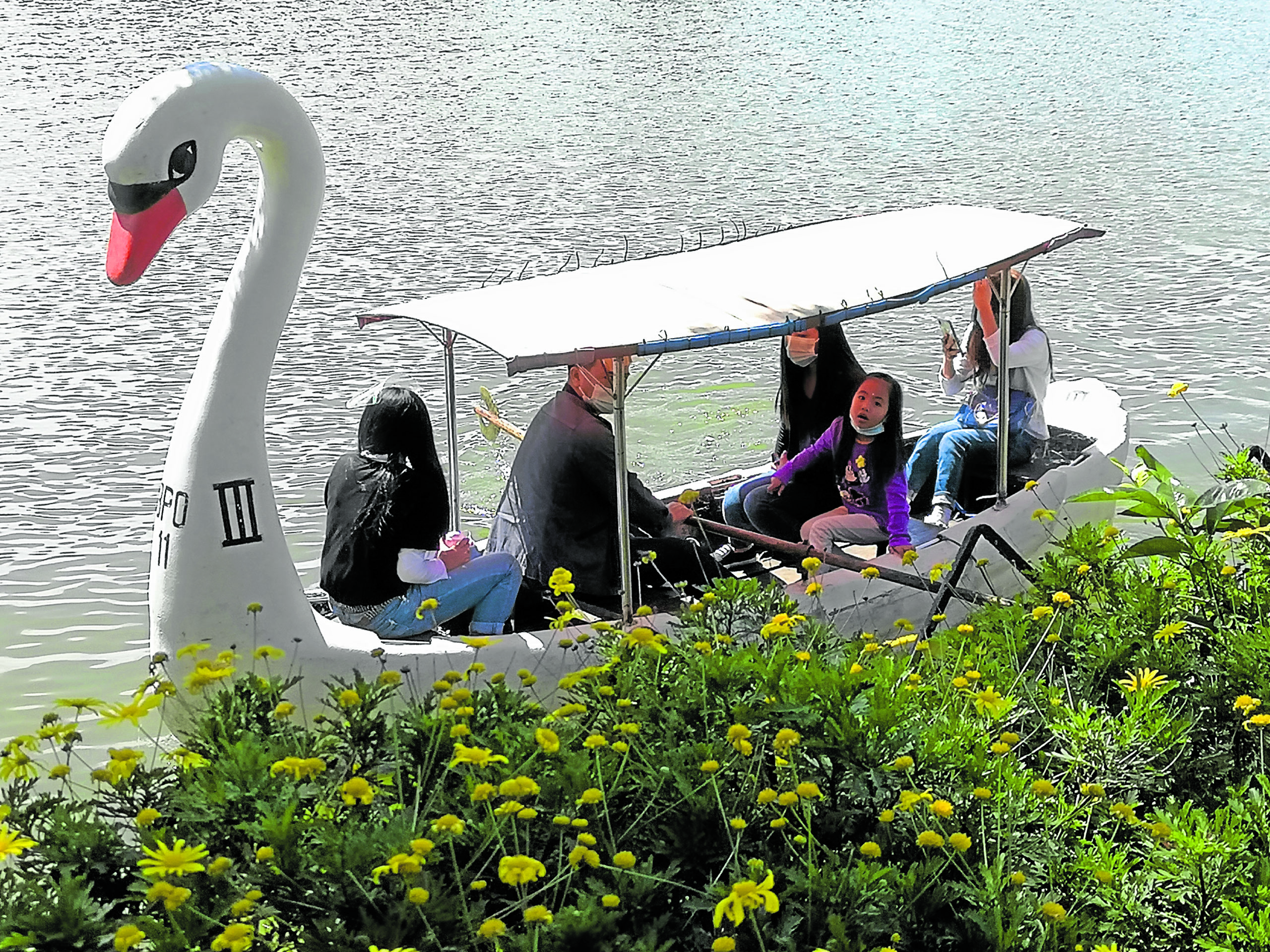
ONLY LOCALS FORNOW Baguio residents have started returning to the parks, joining tourists who have been welcomed back to the summer capital following months of lockdown due to the coronavirus pandemic. But the city shuts its doors again on leisure travelers from Metro Manila and four Luzon provinces during the Lenten season due to the rise ofCOVID-19 cases in these areas. —EV ESPIRITU
BAGUIO CITY—Leisure travelers from Metro Manila and four provinces in Luzon have been barred again from visiting the summer capital starting Monday due to fresh spikes in new coronavirus disease (COVID-19) cases in these areas, Mayor Benjamin Magalong said.
The two-week border restrictions, which will last until after the Holy Week, covered residents from the town and cities of the National Capital Region (NCR) and those from the provinces of Rizal, Cavite and Laguna in Calabarzon and of Bulacan in Central Luzon.
The ban will be lifted after April 4, Easter Sunday, Magalong said during the flag-raising ceremony at the City Hall here.
Travel in and out of Metro Manila and these four provinces has also been restricted for two weeks by the Inter-Agency Task Force for the Management of Emerging Infectious Diseases because of the sharp rise in COVID-19 cases.
Officials here expect a drop in visitors’ arrivals for the just reopened tourism industry, since at least 70 percent of the city’s tourist market comes from NCR and the four provinces included in the travel restrictions.
But, Magalong stressed the need to “control mobility” as “infections in this city went up by a hundred percent.”
As of March 21, Baguio has 714 active COVID-19 cases out of the total 6,877 infections recorded since March 2020 when the pandemic struck. Baguio now has 117 fatalities related to the disease.
Extra cautious
Magalong said Baguio’s medical practitioners had conducted active community testing in the last four days, detecting 30 new coronavirus patients out of 2,641 residents who availed of the 6,000 reverse transcription polymerase chain reaction (RT-PCR) tests offered by the city government.
But the new cases were considered “small” as it represented only 1.2 percent of the city’s tested population, the mayor said. Magalong said Baguio had become extra cautious because none of the city’s neighboring towns accepted the 3,000 test kits he had offered for free to determine the rate of infections in their respective communities.
The city’s travel industry suffered when Luzon was locked down in March, losing up to P1.6 billion when the subsequent quarantine stopped all tourism-oriented businesses from opening.
Reschedule bookings
Most of the city’s accommodation and food establishments began recovering in October when Baguio resumed accepting leisure travelers initially through a travel bubble with the Ilocos region.
The city soon allowed travelers from all over Luzon, drawing more than 80,000 guests during the peak tourist months of December and January because of the yuletide celebrations.
In Ilocos Norte province, tourists will remain welcome during the Holy Week, except for those coming also from Metro Manila, Bulacan, Laguna, Cavite and Rizal.
In an advisory on Monday, local tourism officers encouraged visitors from these areas who had confirmed bookings beginning on March 22 to April 4 to consider rescheduling their travel to the province.
Prior to the pandemic, the province had been drawing Holy Week vacationers, reaching around 600,000 during the Lenten period in 2019.
Among the destinations frequently visited were the windmill farm in Bangui town, the Unesco World Heritage site of St. Augustine Church and the sprawling sand dunes both in Paoay town, the famed beaches in Pagudpud town, and the Kapurpurawan rock formation in Burgos town.
Gov. Matthew Marcos Manotoc said on Saturday that the province would not be placed on a lockdown even after Department of Health records showed that the infection rate in the province had risen at least six times in the past four weeks.
Another lockdown would pose “economic consequences,” especially that the province’s tourism industry, a main economic contributor, had only begun to recover from the brunt of the pandemic, Manotoc said in a statement. —REPORTS FROM VINCENT CABREZA AND JOHN MICHAEL MUGAS